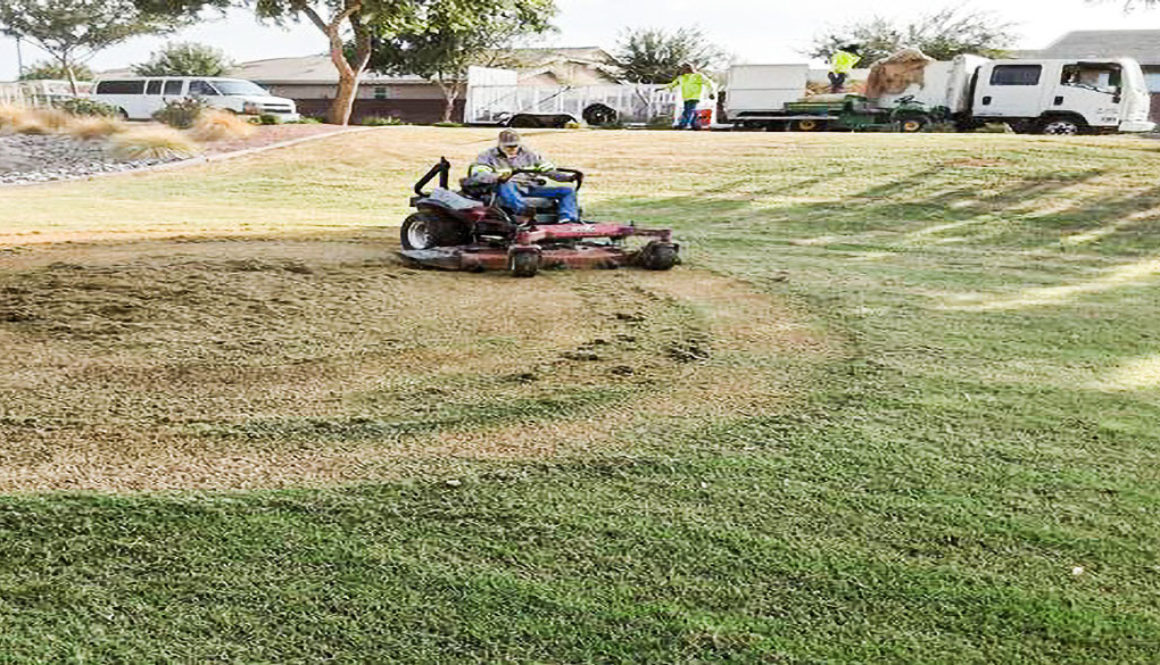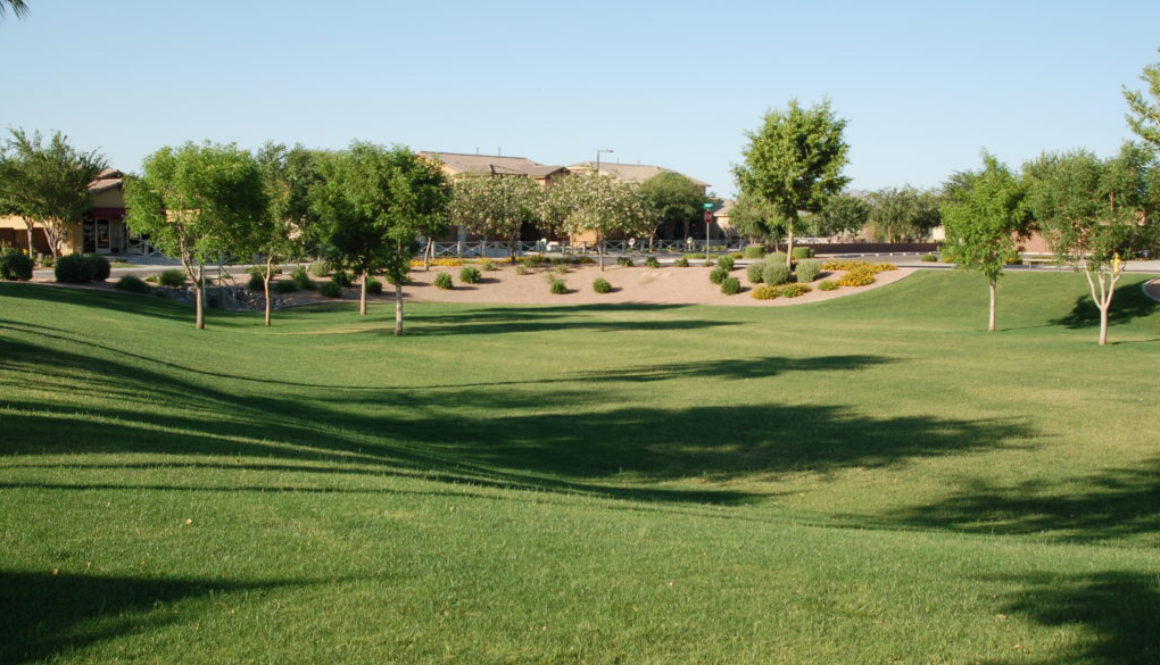OverSeeding: The Importance of Scalping
It’s officially time for OverSeeding here in Arizona! As temperatures begin to cool, we are looking to transition turf from Summer Bermuda to Winter Rye grass. Because OverSeeding is a process with multiple different stages and steps, many people are not sure where to start. Not to fear, we’ve got you covered by giving you all of the information you need to understand the first step in Overseeding this season; Scalping.
Download a Shareable Version of this article here.
What is Scalping?
Scalping, in its simplest terms, is a preparation technique that involves mowing turf lower so that the stems of the grass are exposed. This is done by lowering the mow height on the lawn mower while mowing, thus creating the brow-colored lawn that you see. This is specifically important in fall scalping as it allows the Bermuda to stay stronger while going dormant and allows the Rye seed to reach the ground.
How is Scalping done? In order to properly and effectively scalp, we start off by cutting the water a couple of days before scalp and then proceed to drop the mow height about 1-3 days prior to OverSeeding. After mowing, we collect and remove most of the clippings (leaving some as mulch for the OverSeeded seed). Once this is done, the turf should appear brown/tan as only the stems of the turf remain and a little bit of the soil is exposed. Light de-thatching, or the removal thatch accumulation, during this time ensures that the seed has appropriate contact with the soil.
After scalping, turf should be ready to move forward in the OverSeed process with the application of new seed. This new seed will require more frequent water times with shorter watering duration as we want to be sure to keep the seed moist without floating it.
Benefits of Scalping
Scalping, if done correctly, has a variety of benefits when it comes to a healthy transition for turf. Scalping works as a clearing process to ensure that the turf is free of debris, clippings, and thatch that could prevent the lawn from taking on new seed. This makes it easier for the seed to reach the soil while also working to prevent disease and turf health.
Another benefit of winter scalping is that the process exposes the soil to more sunlight, warming up the soil and promoting the growth of the seed.
Finally, scalping brings the entire lawn’s turf down to the stem, ensuring that all areas are the same height and receive the same amount of new seed. This promotes even growth throughout and leads to a better-looking lawn as the new seed grows in.
While it may not be appeasing to see the brown turf that appears following scalping, it is important to remember the benefits and reason behind performing this step when OverSeeding. The process takes anywhere from 4-6 weeks, but in time the brown turf that you are finding following the scalping process is replaced by healthy, strong winter grass that is appropriate for the season and promotes long term health.




